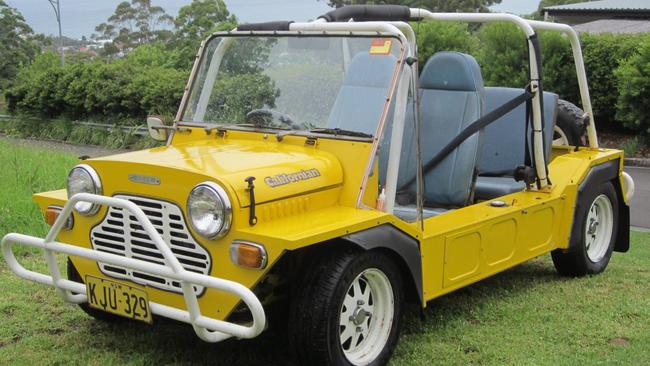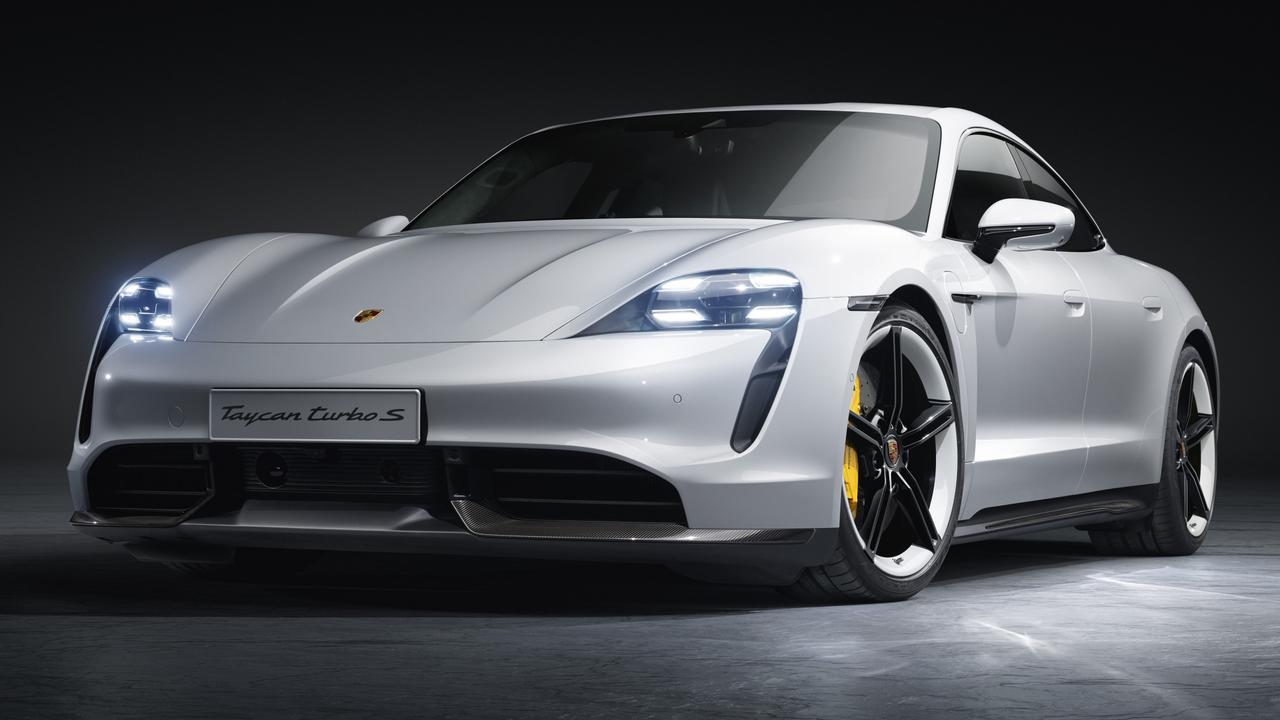Mini Mokes: cars that dare not speak their name
AT The Weekend Australian we don’t write about our cars. Mainly out of embarrassment and the fact that we don’t have double-barrelled names.

MOTORING journalists regularly talk about their classic cars. Sandy Parsloe-Parsloe tells us his 1966 Jensen Interceptor has brake judder. Jimbo Pendlebury-Davenport says his 1958 Standard Ten popped a front-wheel bearing on a jaunt to Malmo. Dicky Fotheringham-Smythe writes that his Gordon-Keeble is celebrating its 50th birthday but he is still having trouble getting to its spark plugs.
At Weekend A Plus we don’t write about our cars. Mainly out of embarrassment and the fact that we don’t have double-barrelled names. You see, one of us, and we won’t name names (Mark Southcott), owns the car that dare not speak its name. This is a piece of metal 3048mm long, 1308mm wide, with four wheels, four seats, a tent for a roof, a large engine and no safety protection. It was created by the Greek designer Alec Issigonis, who was also behind the Nuffield Guppy.
The name Mini Moke comes from two words. Mini meaning miniature and moke meaning donkey. Unfortunately, more Mokes were made in Australia than anywhere else. Anywhere else means Britain and that centre of automotive excellence, Portugal. In fact, our Mokes were export hits. In the same way the US gave us serial killers, we gave the US Mokes. While legend has it Issigonis designed the small donkeys for the British Army, I believe he was trying to build a car small and light enough to compete with the Fiat Jolly.
Fiat boss Gianni Agnelli owned the 25m yacht Agneta but he needed a land-based tender for the days when you couldn’t get a cab or a donkey at the wharf at Cap-Ferrat. So he sent a Fiat 600 to Ghia and back came a little car with no roof and wicker seats that he could carry on board Agneta. So the Moke was a Jolly rip off.
This year the Moke turns 50. Southcott, a stylish chap like Mr Agnelli, has a yellow Moke with denim-coloured seats, pictured.
We hope he doesn’t show anyone.
If you like Jollys and Mokes you’ll want to buy the Alfa Romeo 6C 2500 Sport Berlinetta Benito Mussolini gave his lover Claretta Petacci. The Alfa didn’t bring Ben and Clara much luck. She and a few mates were caught in the car while tying to leave town and together with Ben were hung at an Esso service station in Milan. But you can buy the Alfa from RM in Paris in February for about $4 million.
Talking of car disasters, a nice page-turner for the next six weeks is Jason Vines’s What Did Jesus Drive? Vines was present at the worst US automotive crises but is not your typical corporate spinner, eschewing phrases such as “thermal events” (cars catching fire), “excessive hydration” (drowning) and lead poisoning (being shot). He takes the very quaint view that the safest way through a crisis is to protect the safety of your customer.
While working for a nearly bankrupt Chrysler, the company introduced an automotive transmission that had a free bonus feature. It made the car break down. The answer was to position the defect as a safety feature. “Traditional transmissions when they broke left motorists stranded to face thugs, wolves and vagrants,” Vines told the media. Chrysler engineers had developed a new feature, “limp-home mode” that allowed the driver “at least 50 miles (80km) to safety”.
“This was a good thing. Kind of like a rash on your arm is better than a rash on your ass.” Vines starts and ends the book with the same simple question: Why is it so difficult for car companies to tell the truth?
Now in case you think Mr E. Scrooge and I share similar feelings about Thursday, let me say happy whatever you celebrate, thank you for all the emails and defamation letters and if you make one resolution for 2015, make it to do your best to get electric/hybrid/hydrogen and any other scourge-on-humanity-fuelled-cars out of your garage.



